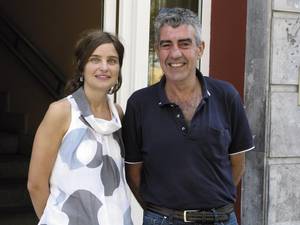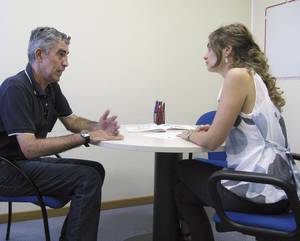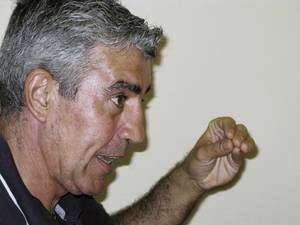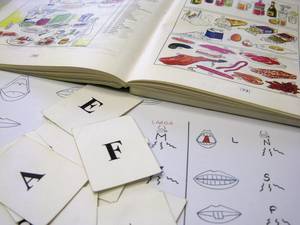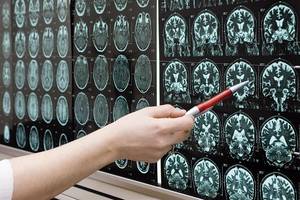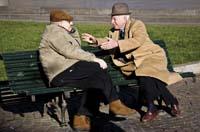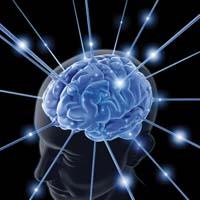Afasia, lost words in the head
2011/10/01 Leturia Yurrita, Iñaki - Elhuyar Zientziaren Komunikazioa Iturria: Elhuyar aldizkaria
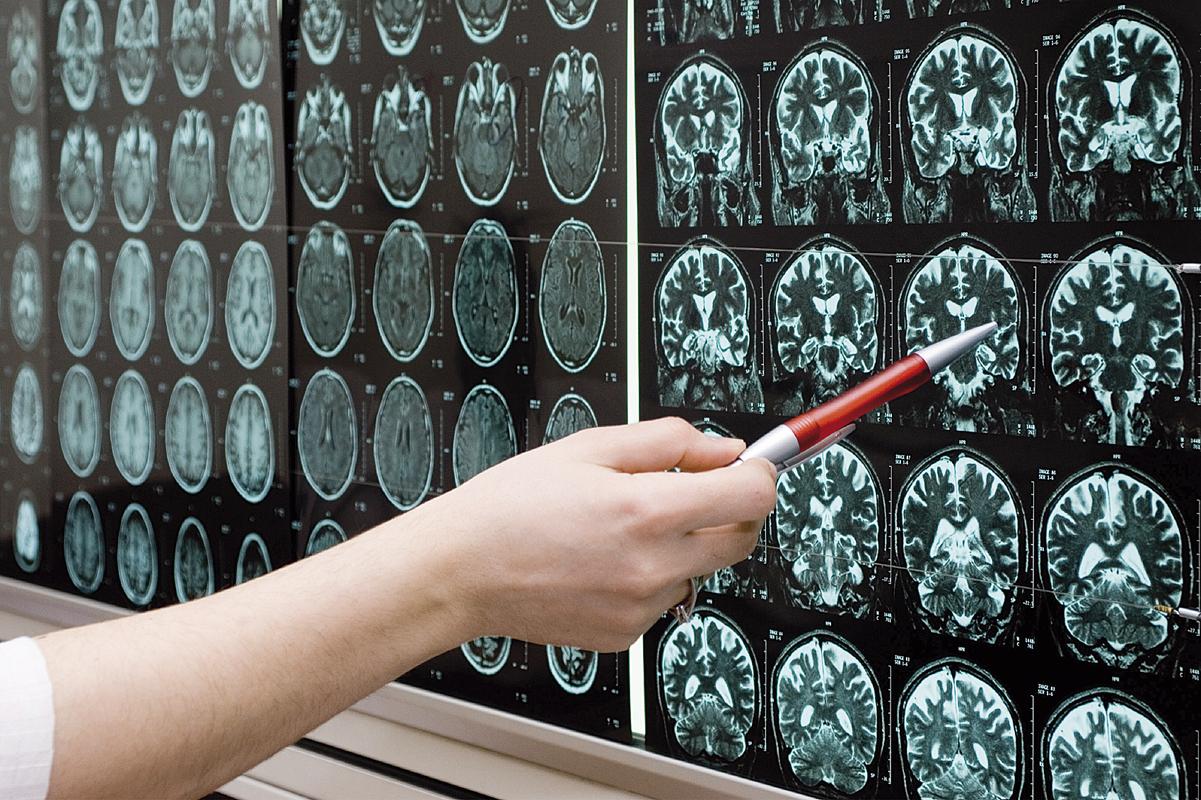
San Sebastián, 6 years ago. Josetxo enjoyed a special day with his eldest son. At seven o'clock in the afternoon the two went in to take something. He slid to the toilet down the stairs and hit the head. He remained unconscious for 10 minutes. Upon recovery, the ambulance was transferred to the hospital alone. Two hours later he lost his knowledge again. It did not wake up until 20 days. The blow affected the left hemisphere of Josetxo's brain. When he left the coma he had difficulty moving half of the body. It was 3 months without getting out of bed. But not only that, it also lost the ability to speak. Diagnosis, aphasia.
Afasia means that in Greek, no word. It occurs by damaging the cerebral area that governs linguistic competence. The cause, as in the case of Josetxo, can be a blow, but also an infarction or a stroke. Depending on the magnitude and location of the damage, there are different levels and types of aphasia. From the difficulty to find precise words to the absolute impossibility of speaking. Other times the understanding fails: there can be problems of processing of the heard and read. Or vice versa, the afasia person is able to understand, understand, but cannot express what he wants to communicate.
Josetxo spent two years without words. "Impotence, fuero... feels frus-tra-ción... It's very hard to hear everything and say nothing; the ideas are very clear in the head, and I had memories well," says Josetxo. It still costs you to find words and throw complete sentences and in the proper order. "And rage," adds his neighbour, Nekane Galparsoro. Nekane is now able to communicate with words. In the rehabilitation center for people with neurological disabilities in the Antiguo neighborhood of San Sebastián, Galparsoro works with cases like that of Josetxo. It is a center of the Aita Menni Hospital. In the interview, Josetxo has sought the logo support to help him when he can't guess with any word. "Rage, yes. They believe we are peaks because we can't speak, and it's not so," Josetxo stressed. "It has been hard, but now I settle down."
Brain functions and areas
To understand the treatment of the different types of aphasia and of aphasia itself, laterality is a key concept, that is, the spatial distribution of the different functions in the brain, both in the right hemispheres and in each hemisphere. In the case of language competencies, in the left hemisphere there are two differentiated zones that deal with language processing. Sensitive area of Wernicke and Broca area, motor. The area of Wernicke is responsible for decoding what was heard, in general, of understanding, and that of Broca to create words, of linguistic expression. The Broca area is very close to the basic part that controls movement, since to create the word it is necessary to move the muscles of the mouth and tongue, among others.
For the performance of their functions, the brain zones and the hemispheres collaborate. In the experiments it has been observed that if we anesthetize the left hemisphere the person loses the ability to speak, but if we remain on the right, it is possible to have a conversation. However, the right hemisphere also participates in verbal communication: it is responsible for the tone, rhythm or strength of speech, as well as the emotional sphere. There is also another detail to be made. This distribution of functions between the hemispheres is common in 99% of the right people. The person on the left is not so clear: linguistic competence is divided into two hemispheres. For this reason, the left can have aphasia if they damage the right hemisphere.
The typical classification of aphasia is performed according to the cerebral portion in which the damage has occurred, taking the name of the affected area and taking into account its own characteristics. If the affected area is of Broca we would be facing an expressive aphasia, also known as motor aphasia. Language loses continuity, is slow, almost telegraphic, and can lose the grammatical order of phrases. In the most serious damage, only a few words can be said and Broca's aphasia can cause absolute silence. Understanding is maintained.
In the afasias of Wernicke the most affected is understanding. The patient does not lose the ability to speak, but many times the speaker does not make sense, although he does not realize the speaker. If the damage is very widespread and encompasses both the Broca area and the Wernick area, comprehension and expression capabilities are lost: it is a general aphasia.
To put a surname to the aphasia of Josetxo, the ideal would be that of Broca; more specifically, it has apraxia of language, difficulty to program words. He had the ability to create totally lost words, not understanding. Galparsoro has explained the details of the aphasia of Josetxo: "All the words were there, the concept or meaning was there and the vocabulary of the words associated with each concept was complete. The problem was getting to that dictionary." Therefore, treatment should find a way to get there.
Chuleta. In a dictionary of images used by children, the memory of the initial sessions brings to Josetxo the drawings of a beautiful piece of meat. The concept of chuleta in the head, but can not be converted into words, into sounds. To achieve this, he had to start from the beginning, somehow learning to speak again. First, letters and phonemes, then syllables, then words and, finally, simple sentences. That has been the way, but with a small advantage: it already had the whole dictionary in mind. "From the image we give him the concept that we want to name and we have to take the word out. As we complete the vocabulary, we will begin to gather words and make phrases, and little by little we will express ideas," explains Galparsoro.
L, S, I, N, A... nothing else get out of the deck, one of the exercises of the initial sessions was to say the letter. Now it seems easy, but then I had to make a huge effort. The objective of the activity is to work on the programming of movements. Those who do not have problems, without realizing it, use automatically the organs involved in speaking: the tongue, the lungs, the lips. Josetxo has had to learn again when and how to eject the air, where to place the tongue, etc. until you get it done automatically. At the beginning of the treatment, eight weekly sessions were held. Now they only make one. "I'm a head, but I'm also Nekane! ", recognizes Josetxo.
Key: brain plasticity
Josetxo has managed to recover the linguistic functional competence: he is able to express his needs, to express what he feels. What has happened in Josetxo's brain during the years of rehabilitation? The key is the concept of brain plasticity. "We call brain plasticity to the ability to adapt or adapt the nervous system," says Eloi Nin, director of the brain damage rehabilitation service acquired from Aita Menni Hospital. "This capacity allows to minimize the consequences of the loss of a function, such as language, after brain damage. The brain has the capacity to change both from the structural point of view and from functional reorganization."
To recover the functions, the connections between neurons are adapted, that is, the synapses. When brain damage destroys connections and their abilities, new links around are activated to fulfill the lost function.
The assumption of this responsibility for the neurons of the zone has a reason. In children, it has been observed that linguistic brain zones are broader in early ages. As this capacity is developed, this function is concretized and concentrated in the two areas mentioned -Broca and Wernicke-. However, this ample space hides this capacity and, if there is brain damage, launches the original function. In fact, according to Dr. Nin, some synapses are active and others are postponed in stand-by mode, the latter are activated to fulfill the original function.
But the more consolidated is linguistic competence, the more difficult is reconversion. "Age is an important factor of recovery," says Nin. "The older the brain is, the smaller the plasticity." In addition to age, functional and structural reorganization is affected by other factors such as the extent of the damage, its location --worse prognosis of the Wernic area -, or by the prior linguistic capacity of the patient.
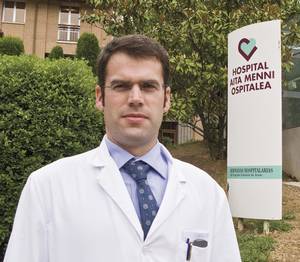
How does restructuring occur? To manage synapses or connections, the brain has inhibiting and exciting systems that operate through neurotransmitting substances. A neurotransmitter can stimulate the adjacent neuron and boost your response, or break your relationship with it, inhibit communication. The main inhibitor system of the brain is called GABA, which works through the gamma-aminobutyric acid neurotransmitter. Well, when there is damage, the brain itself reduces the influence of this neurotransmitter to allow new connections, that is, to favor plasticity. Rehabilitation takes advantage of this opportunity and drives new connections to recover lost functions. With time the inhibitor system is reinforced, so it is important to start rehabilitation as soon as possible.
The treatment of afasias encourages new connections. Rehabilitation and plasticity come together in the brain of Josetxo to recover the word. However, in all cases it is not possible. "Then you have to use alternative communication systems," says the logo Nekane Galparsoro. "Computers, for example, and if they can't use them, leaflets with images. It's about communicating." Nekane presents a group that communicates by computer. All are in a wheelchair. The voice synthesizer transforms what they write on the keyboard into sound, which can be a slower but normal conversation. Before saying goodbye one writes on the screen: "This is what frightens me most: that people think we are the peaks."

Gai honi buruzko eduki gehiago
Elhuyarrek garatutako teknologia




